Seasons – Spring 2025

Spring is in full swing, bringing new opportunities for landowners to support native wildlife and meet their property goals through Wildlife Management. In this edition, we’re highlighting timely spring activities, like habitat control, supplemental water, and supplemental food, that can make a big difference for your land. If you’ve been thinking about making the switch from traditional ag to Wildlife Management, don’t wait, the April 30th deadline is quickly approaching. Take a listen to our latest episode of our Your Texas Land podcast regarding predator control, a special feature from our partners at the Texas Wildlife Association, plus a special announcement of our Plateau mascot.
Until next Seasons,
The Plateau Team
Meet Rocket the Roadrunner
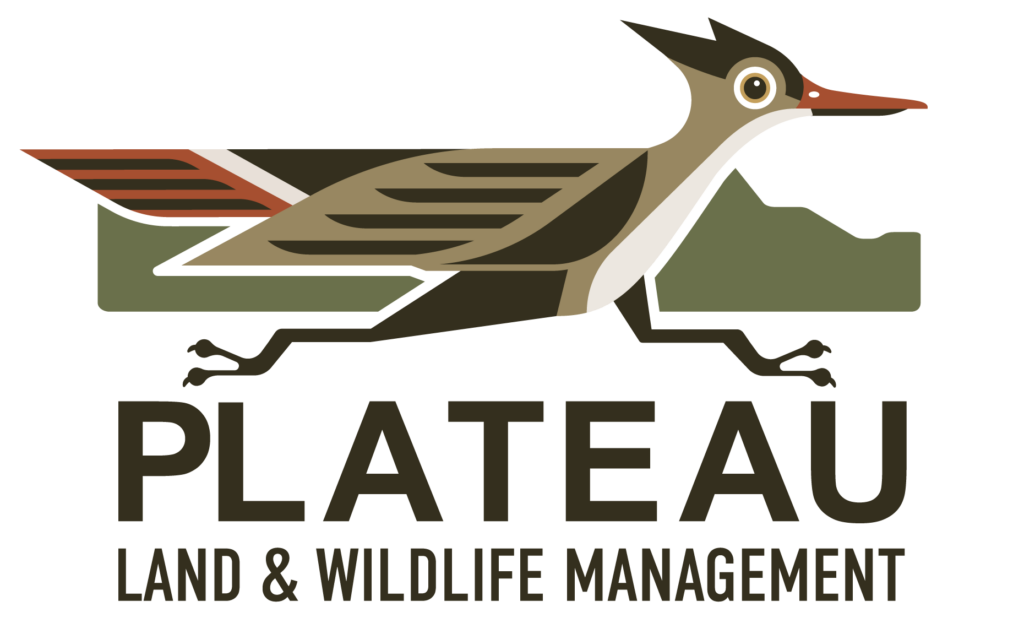
Our newest mascot here at Plateau! Rocket is known for his courage, strength, endurance, good luck, and protection. He is intelligent, curious, and skillful. Rocket enjoys long, leisurely runs and taking naps. His biggest pet peeve is slow drivers. When asked about his favorite music, he prefers the sound of nature. The biggest piece of advice he would give to his younger self is to trust his instincts.
Please help us welcome Rocket, and get ready to see a lot more of him in our future posts!
Spring Activities: What You Can Do Now
As spring arrives in Texas, landowners focused on Wildlife Management have a valuable opportunity to implement seasonal activities that benefit native species and promote a thriving ecosystem. Spring is the perfect time to take action. Here are some key activities to consider:
Habitat Control
Spring is the season of new growth, making it an ideal time to improve or restore habitats for wildlife. Consider enhancing your landscape with native wildflowers, grasses, and shrubs to provide food and shelter for pollinators, birds, and other wildlife. Try an activity like brush management as it not only checks the box for one of your three required activities for the year, it also is a way to improve habitat quality for species like deer, quail, and turkey. Herbicides are often the most efficient way to control common brush species like mesquite and prickly pear. Learn more about either a chemical brush control of native or invasive plant species or a foliar application chemical control, and see if these services fit your land and management plan.
Supplemental Water
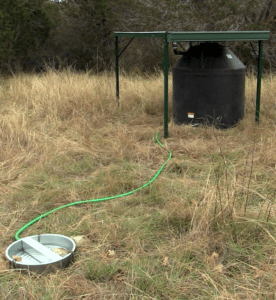 As Texas faces another season of high temperatures and drought conditions, landowners like you are seeing firsthand the challenges that come with maintaining water, forage, and soil health. When spring gives way to the hotter, drier months of summer, access to reliable water sources becomes critical for native wildlife. Supplemental water is a key Wildlife Management activity that ensures animals have the hydration they need when natural sources begin to dry up. By providing dependable water through water tables or troughs, landowners can support a wider range of species and help wildlife remain healthy and active through the most stressful time of year. This not only enhances the habitat on your land but also helps meet the requirements for a Wildlife Management Valuation.
As Texas faces another season of high temperatures and drought conditions, landowners like you are seeing firsthand the challenges that come with maintaining water, forage, and soil health. When spring gives way to the hotter, drier months of summer, access to reliable water sources becomes critical for native wildlife. Supplemental water is a key Wildlife Management activity that ensures animals have the hydration they need when natural sources begin to dry up. By providing dependable water through water tables or troughs, landowners can support a wider range of species and help wildlife remain healthy and active through the most stressful time of year. This not only enhances the habitat on your land but also helps meet the requirements for a Wildlife Management Valuation.
Supplemental Food
Natural food sources for wildlife, like native forbs, grasses, and insects, can become scarce or less nutritious in late spring rolling into summer. Providing supplemental food during this time is a valuable Wildlife Management activity that supports the health and survival of native species. Whether it’s through platform feeders, protein blocks, or managing the native habitat, supplemental food sources are a great way to attract wildlife for observation and population surveys, another qualifying wildlife management activity. It’s especially important for deer, turkey, and ground-nesting birds whose energy needs to increase during the warmer months.
Spring Breeding Bird Surveys
Spring is peak breeding season for many Texas species, so now is the time to contact us for a Spring Breeding Bird Survey. These surveys are conducted during the breeding season (March-June) when birds are most vocal and territorial, making them easier to detect and identify. Landowners can use these surveys to document species presence and evaluate the effectiveness of habitat management efforts. This also counts as a qualifying activity towards your Wildlife Management plan. With the survey, you have the opportunity to learn which bird species may be breeding on your property while also observing birds that are migrating through your property this Spring, such as a orioles, warblers, and tanagers. Connect with a Plateau birder today and identify birds both visually and auditorily based on their unique calls, while providing a detailed report of all the species and individuals observed.
Predator Control
Feral hogs are a source of pain for Texas landowners, causing habitat destruction, competing with native wildlife for food, and even preying on young animals like fawns and ground-nesting birds. As part of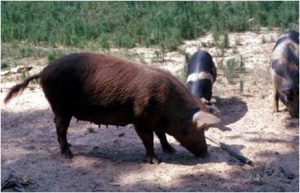 the predator control activity in Wildlife Management, controlling feral hog populations helps protect native species and maintain a balanced ecosystem. Listen to a more in depth conversation about this activity here on a recent episode of Your Texas Land.
the predator control activity in Wildlife Management, controlling feral hog populations helps protect native species and maintain a balanced ecosystem. Listen to a more in depth conversation about this activity here on a recent episode of Your Texas Land.
Look at treating Imported Red Fire Ants. As mounds appear on your property and ant activity increases, this is bad news for other insects and arthropods, ground-nesting birds, and small wildlife of all kinds. Spring treatments reduce ant numbers when wildlife are most vulnerable to predation.
By implementing these spring wildlife management activities, Texas landowners can foster a thriving ecosystem while meeting the requirements of their Wildlife Management Tax Valuation. If you need assistance developing a tailored management plan, our experts at Plateau are here to help!
The April 30th Deadline is Almost Here

Time may be running out—but you might still have options. If you’ve been thinking about switching to Wildlife Management for your property tax valuation, the April 30th deadline to file your Wildlife Management Plan is nearly here. While it’s getting tight, a late application may still be possible depending on your situation. If you’re unsure whether it’s the right move or if you still have time, give us a call, we’re here to help.
At Plateau, we specialize in crafting Wildlife Management Plans that meet all state and county requirements, helping landowners like you make a successful transition from traditional ag or timber valuation.
While the process may seem straightforward, many landowners run into issues when filing the application themselves. Here are three common mistakes we see that can cause delays or even rejection of your application:
- Inaccurate Applications: The Wildlife Management Plan and application include numerous sections and checklists to cover every situation, but many will not apply to your property. Failing to understand which sections and boxes are relevant to you and checking every box can significantly slow down the approval process. Treat the application thoughtfully, providing all the relevant information, to demonstrate your understanding and commitment to responsible land management.
- Double-Dipping Activities: Sometimes, different sections of the Wildlife Management application might seem relevant to a single, planned activity. However, you are not allowed to get credit for the same activity under multiple practice categories. This can be seen as “double-dipping” and result in you failing to qualify. Clearly outline each activity once in the most appropriate section. If a single activity has complex details, consider adding an attachment to provide further explanation.
- Waiting to Start: It can be tempting to wait to get started on your land management activities until your wildlife application is approved. However, waiting for official approval before starting the required activities could jeopardize your entire plan. It is important to perform your activities in the right season for your target species and to show activity throughout the year.
If you miss the April 30th deadline, Texas law allows for a late application, but it comes with a 10% tax penalty for filing late. Contact us today to find out the best option for you.
Please note: In order to meet the April 30th deadline, any plan ordered after March 15th will incur an expedited filing fee of $700.
Balancing Nature: Predator Control on Texas Lands
In this episode of Your Texas Land, we tackle an essential topic for landowners—predator control. Managing predator populations is an important tool for maintaining a balanced ecosystem and protecting native wildlife. Shane Kiefer and David Riley discuss effective strategies, the role of predators in land management, and how to implement humane and sustainable control methods.
Whether you’re dealing with coyotes, feral hogs, or other predators, this episode provides valuable insights to help you make informed decisions for your property. Tune in now and learn how to safeguard your land while supporting a thriving habitat.
Plateau in the Field: Speaking Engagements & Community Involvement
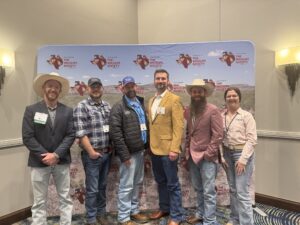

Our team hit the ground running this event season. This year brought exciting opportunities to connect with landowners, partners, and conservation leaders throughout the state. From educational workshops to community gatherings, we’ve been honored to share our expertise, build relationships, and support those who care deeply about the land. Here’s a look at some of the events we’ve been part of this spring.
-Texas Chapter of the Wildlife Society Annual Conference: Plateau was honored to participate in the Texas Chapter of The Wildlife Society‘s recent annual meeting. We value the opportunity to collaborate with like-minded organizations, colleagues, and students on conservation initiatives. The collective passion for protecting Texas’s land, wildlife, and water resources was truly inspiring.
-Driftwood Society Heritage Festival: The festival celebrates the work of the Driftwood Historical Conservation Society and we have been a proud participant speaking about the native wildlife and being able to educate young nature lovers.
-Ducks Unlimited: We had the privilege of sponsoring the Ducks Unlimited Evening of Conservation at YETI’s flagship store in Austin. We’re proud to support and partner with organizations like Ducks Unlimited that are making a lasting impact on conservation efforts across Texas.
-Managing Forestland for Multiple Uses Workshop: Plateau had a great time at the Managing Forestland for Multiple Uses Workshop, organized by Texas Wildlife Association and Texas Forestry Association with hosting support from Habitat Select Nursery, Conservation Equity Partners, LLC and ourselves. Attendees had the opportunity to see different management techniques for Longleaf and Shortleaf Pine, wildlife-focused forestland management practices, and the essentials of conducting a successful prescribed fire. This workshop was a great hands-on experience for new and veteran landowners alike.
-Biologist, Tucker Slack, was recently featured on a episode of Outdoors with Luke Clayton. Tucker dives into how you can transition to Wildlife Management while maintaining your property tax valuation. Listen to his episode here.
Follow us on Facebook and LinkedIn to know what other events we are attending this Spring and Summer.
Guest Article: Checking in on the 89th Legislative Season
Article by our partners at the Texas Wildlife Association
Mid-April marks the halfway point of the 89th Texas Legislative Session. With roughly 10,000 bills introduced, the Texas Wildlife Association, Plateau and Braun & Gresham, and other conservation partners have had a busy spring. Our teams are vetting and monitoring bills, darkening doors in the Capitol and making voices heard in committee processes. Below are some highlights of the legislative session thus far. 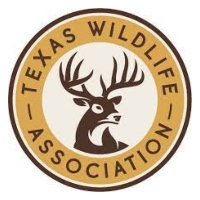
HB 1400/SB 718—Creating the Groundwater Research, Science & Innovation Fund
House Bill 1400 would provide funds directly to groundwater conservation districts to improve the data collection and modelling that informs aquifer management. A related funding measure would seed the fund with $15 million.
TWA understands that decisions related to water management are best made locally and was proud to join the choir of voices sharing support for the bill during committee consideration. The bill was unanimously approved by the House Natural Resources Committee and awaits consideration before the full legislature.
SB 819—Creating a Permitting Process for Renewable Energy Development
Authored by Senator Kolkhorst, SB 819 would put reasonable sideboards on the development of wind and solar energy projects in the state: requiring public notice, environmental consultations, uniformed property setbacks, and improved bonding for site decommissioning and reclamation.
TWA members have shared growing concern with how the unregulated spread of grid-scale renewables is reshaping communities, land use and ecosystems, without any landowner seat at the planning table. The organization’s leadership was proud to testify in support of the bill before the Senate Business & Commerce Committee in late March.
SB 2845 & 2846—Improving the Management of Deer Disease in Texas
Introduced by Senator Perry, SB 2845 would require any released breeder deer to retain permanent, visible identification to improve disease traceability on the landscape. SB 2846 authorizes increased penalties for deer breeding operators knowingly operating outside the bounds of Texas law.
TWA appreciates the work of Senator Perry and his staff for working with stakeholders of varied perspectives in drafting both pieces of legislation and eagerly awaits their consideration.
In a state that relies so heavily on landowners for our food, fiber and healthy ecosystems, it is more important than ever that these rural voices are heard in debates that surround the evolving challenges facing our natural resources. That is TWA’s founding mission, and a commitment that will continue well past the June 2nd close of the 89th session.
News for Landowners
Prickly Pear and the South American Cactus Moth
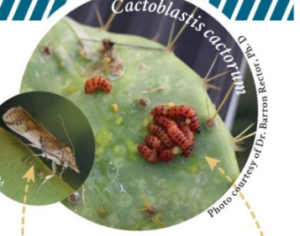 Texas is known for its rugged landscapes and iconic, opportunistic, and problematic prickly pear. While these plants readily provide headaches to the grazing manager, oftentimes pear also serves as food and habitat for wildlife and is a native species on Texas rangelands. However, the South American Cactus Moth has been found and confirmed in five Texas counties.
Texas is known for its rugged landscapes and iconic, opportunistic, and problematic prickly pear. While these plants readily provide headaches to the grazing manager, oftentimes pear also serves as food and habitat for wildlife and is a native species on Texas rangelands. However, the South American Cactus Moth has been found and confirmed in five Texas counties.
The South American Cactus Moth (Cactoblastis cactorum) is an invasive insect (origins from South America) primarily threatening prickly pear (genus Opuntia).The larvae of the moth are the primary concern, burrowing into the pads of the cactus and feeding from the inside out.
Honeybees are having a tough year – including in Central Texas
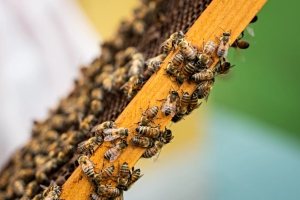
Beekeepers across the country are reporting high rates of honeybee loss this season, and Texas is no exception.
A recent survey from Project Apis m., a nonprofit dedicated to beekeeping science, found that American commercial beekeepers lost about 62% of their bees between June and March — the highest rate in almost two decades. In Texas, commercial beekeepers lost around 67% of their bees on average.
Beekeeping industry experts have sounded the alarm that these losses could have a detrimental impact on produce that relies on honeybees as pollinators, including California almonds.
Five Important Reminders When Finding ‘Orphaned’ Wildlife
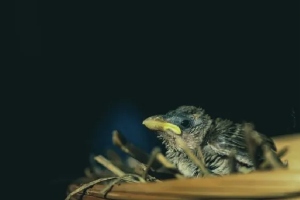 COLLEGE STATION, Texas — While enjoying the outdoors this spring and summer, you’ll likely encounter young wildlife. Although it may be tempting to help a lone baby animal, experts warn intervening can often do more harm than good — and may be illegal.
COLLEGE STATION, Texas — While enjoying the outdoors this spring and summer, you’ll likely encounter young wildlife. Although it may be tempting to help a lone baby animal, experts warn intervening can often do more harm than good — and may be illegal.
Ashley Long, Ph.D., associate professor and Caesar Kleberg Endowed Chair in Wildlife Ecology in the Texas A&M Department of Rangeland, Wildlife and Fisheries Management, emphasized the need to understand wildlife behavior before acting.
Rare plant may be added to endangered species list
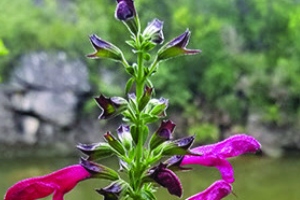
A rare central Texas plant, known to exist in only seven locations, may soon become protected under the Endangered Species Act.
The U.S. Fish and Wildlife Service (USFWS) is proposing to list the big red sage, a plant species endemic to the Edwards Plateau, as endangered. A 60-day public comment period on the proposed listing closes on March 24.
Why are more turtles crossing Texas roads?
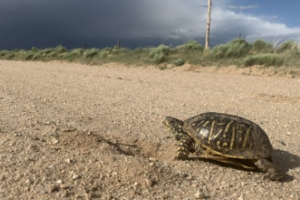
Forget the chicken — have you ever wondered why the turtle crossed the road?
If you’ve seen more turtles venturing across Texas roadways lately, you’re not alone. As the warm days of spring arrive, these four-legged reptiles start searching for mates. Soon, they’ll be out searching for suitable nesting spots as well.
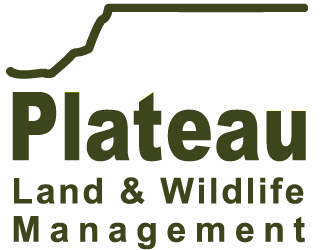




Sorry, the comment form is closed at this time.